Do you ever wonder which oil is the healthiest to cook with when preparing a meal? This post will cover all the bases and give you the inside scoop on which oils are best to use and when to use them.
Using oils when cooking and preparing meals is an essential part of making a meal delicious. Oils can be the make or break of a great recipe.
I say this because even with subtle differences in taste and texture, using the incorrect oil can make the whole dish turn out wrong.
Whether you are drizzling oil over a yummy salad of arugula and tomatoes, using oil for baking some healthy muffins or sautéing your favorite vegetables as a side dish – the oil you use can make all the difference.
For example, I love to use coconut oil because it’s healthy (see all the good things about coconut oil here). I use it in healthy banana chocolate chip muffins, and even when I roast sweet potatoes.
I also know that using olive oil in recipes like my Garlic Parmesan Green Beans is a healthy choice.
And I'm all about healthy choices now that I have a lifestyle that helps me to feel my best. I eat to avoid inflammation, and I avoid sneaky sugars, too.
So, all that to say, every oil has its purpose and choosing the right oil while keeping it good for you is a big part of recipe success. Read on to learn about the healthiest oils to cook with and when to use them.
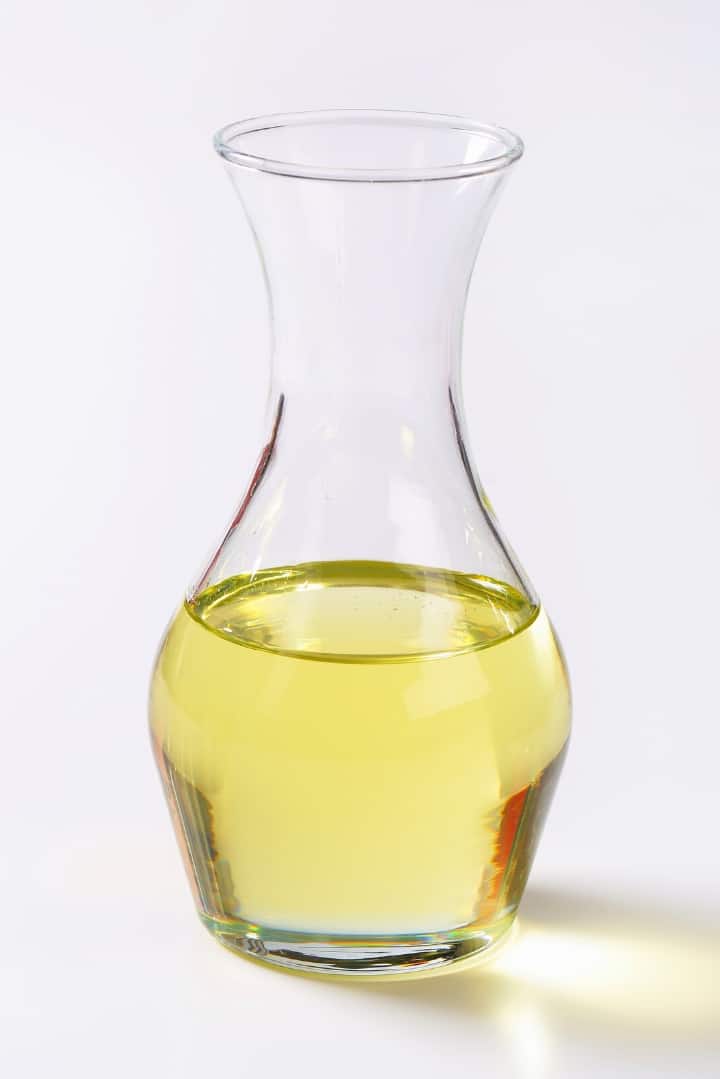
HOW DO I STORE OIL?
Most oils can be left in the pantry, as long as it is cool and dark. Don’t buy in large quantities unless you use the oil up within a year. Some oils cannot be kept for that long, so always read the label to avoid the oil going rancid. Also, be sure to check the label for refrigeration requirements, just in case.
TIPS ON CHOOSING THE HEALTHIEST OIL TO COOK WITH
It’s best to figure out before you start making a recipe, the purpose of the oil you are using, and why a particular oil would be favored over another. Let’s take a look and break it all down.
- Baking: Neutral oils don’t have a strong flavor, so using them does not affect the taste of your baked item. Examples are grapeseed oil, vegetable oil, and sunflower oil.
- Salad Dressing: When drizzling oil over a salad, or making a salad dressing, go for an oil that has some flavor. Flaxseed oil is good, as is extra-virgin olive oil.
- Sautéing: For sautéing, an oil with a smoke point on the lower end of the scale is best. What is a smoke point? It’s basically when an oil will begin to smoke and lose its effectiveness. Using the wrong oil may result in oxidation of the oil and even flames.
- Frying: Recipes that require frying need an oil with a high smoke point. They are usually more refined. Examples are canola oil vegetable oil, safflower oil, and pure olive oil. Their smoke point is typically 375F, which is a common temperature for frying.
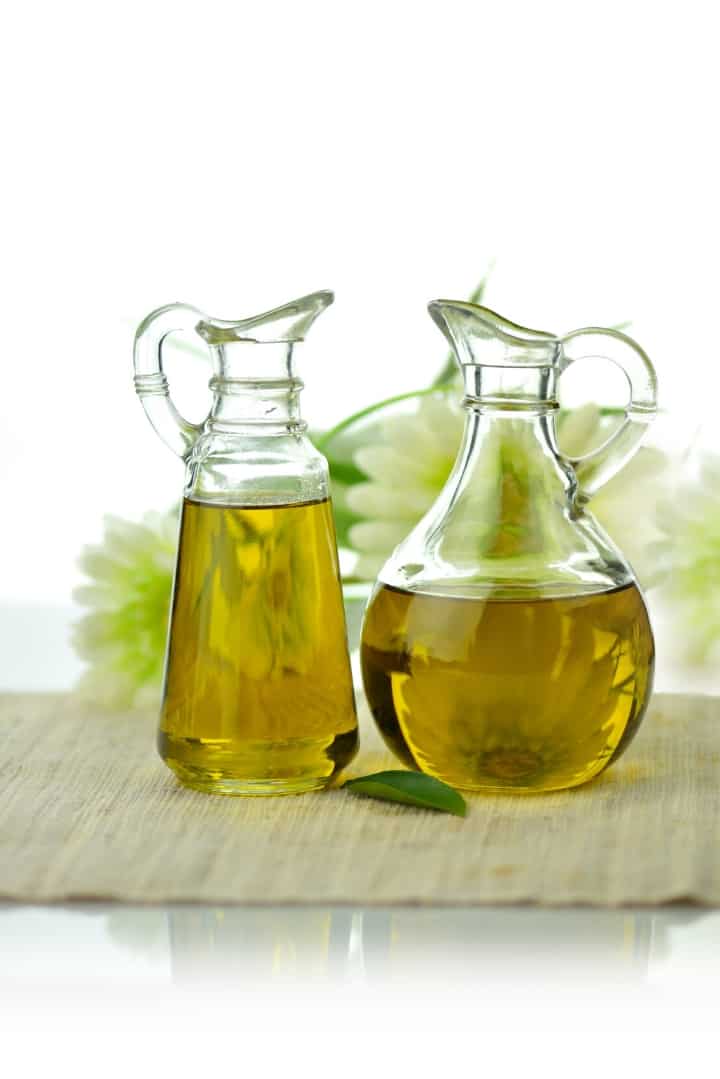
EXTRA VIRGIN OLIVE OIL IS THE HEALTHIEST
While all oils have good points, I know that extra virgin olive oil has antioxidants that provide a lot of protection. They may help fight cancer and definitely have anti-inflammatory properties.
Extra virgin olive oil a great replacement for unhealthy saturated fats and is known to fight heart disease and have positive effects on blood pressure. When olives are harvested not yet ripe, the healthy components like polyphenols and antioxidants are maximized.
It has antibacterial properties and may even help reduce beta-amyloid plaques related to Alzheimer’s disease. Olive oil is high in monounsaturated fat, a super-healthy fatty acid. The great thing about this is that monounsaturated fats are resistant to high heat, so this oil is a good one for cooking.
Extra virgin olive oil is made from olives, cold-pressed. Read the label when shopping for extra virgin olive oil, though. Some oils are marketed as such but may have been diluted with highly refined oils. Check for quality and read the ingredients list carefully.
The thing to remember about olive oil is that it does not have a high smoke point (325F to 375F), which means that when heated to high temperatures, it may change in flavor and nutrition. So, extra virgin olive oil is really best for sautéing. And of course, drizzling over salads and hummus, and using in salad dressings.
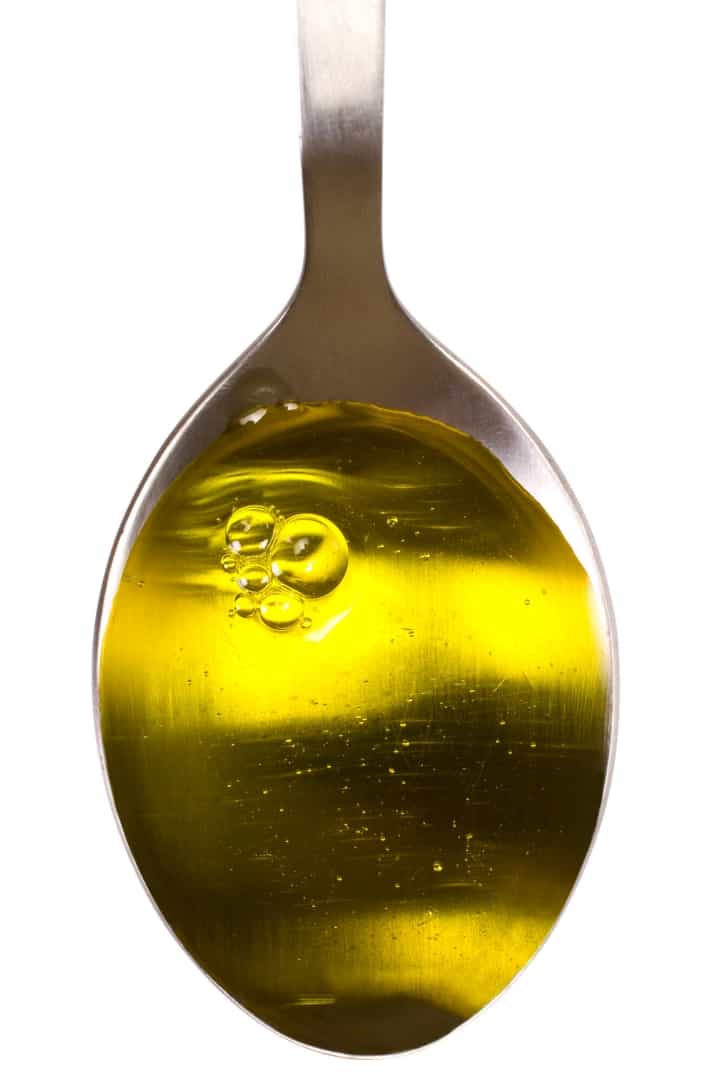
CANOLA OIL
Canola oil makes the list as well. Even though it is somewhat processed, this oil is low in saturated fats and has a neutral taste. So, although it is good for frying (moderation here, folks!), because it has a smoke point of 400F, it’s not the oil you want to use to sauté. An oil with more flavor is preferable. One good thing about canola oil is that you can buy cold-pressed versions instead of a highly processed product to keep it on the healthy side.
AVOCADO OIL
We all know the amazing health benefits of avocado. The oil of the avocado carries these properties as well. Avocado oil is an excellent option rather than canola oil if you are looking for a healthy fat to use for frying. It’s lower in saturated fat than many oils, and has a high smoke point at 375F to 400F. Avocado oil is not highly processed, which is why it’s an excellent healthy oil to cook with.
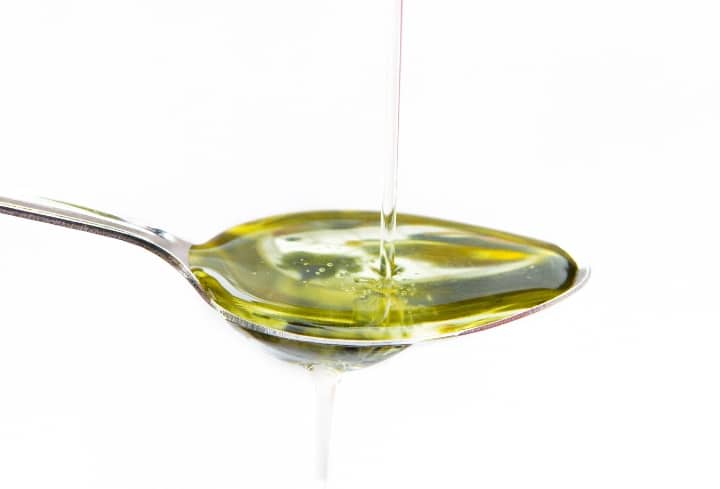
SAFFLOWER OIL
Safflower oil is high in omega-9 fatty acids. Although these fatty acids can be produced in the body, supplementing them even more adds to the benefits. Omega-9’s help with inflammation, too, and that’s another reason to use this oil. It’s not flavorful enough for salad dressings but works well when frying and sautéing. The smoke point is 510F.
PEANUT OIL
Peanut oil is another oil that is full of flavor, yet low in saturated fat. Remember though, if you don’t want your food to have a peanutty taste, skip this oil and choose another. It’s smoke point is 450F, so is good for frying and sautéing.
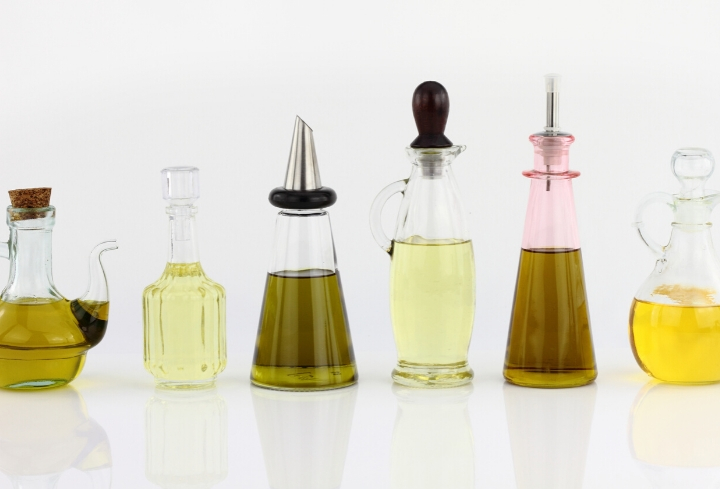
COCONUT OIL
This oil is excellent for baking. It does have a high saturated fat content, and that’s why it works so well in desserts. Despite that, coconut oil raises both good and bad cholesterol, so puts it a notch higher than butter or lard. The smoke point is low at 350F, so it is not a suitable choice for frying. It’s a great vegan alternative to butter in recipes.
FLAXSEED OIL
This oil is perfect for drizzling and as a base for salad dressings. It’s not for heating at all, though. This oil is meant for garnishing hummus and other dips and should be bought in small quantities and refrigerated to guarantee freshness. Recipes where no heat is required are where you’ll use flaxseed oil. Don’t leave this one out - it is high in omega-3’s, and benefits heart health.
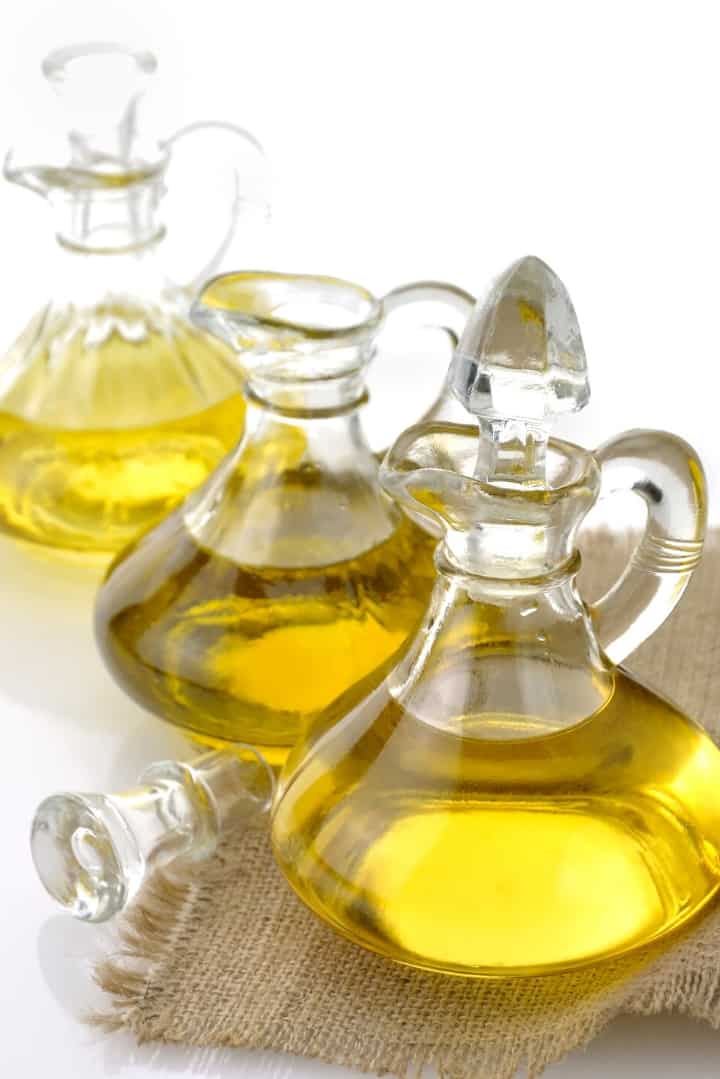
SESAME OIL
Sesame oil is a top-notch alternative for sautéing. It does lend a sesame taste to foods but is cold-pressed like extra virgin olive oil. That makes it one of the healthiest oils to cook with. It has a low smoke point at 350F to 410F.
WALNUT OIL
Walnut oil is typically sold semi-refined or unrefined. It’s not for sautéing or for another cooking method requiring heat. It is perfect for drizzling on a salad or for garnishing a cream soup.
GRAPESEED OIL
Grapeseed oil is one of the healthiest oils to cook with that may not be on everyone’s radar. This oil has vitamin E and other nutritional components. It’s smoke point is 420F and is thought of as an all-around option for frying, baking, and sautéing.
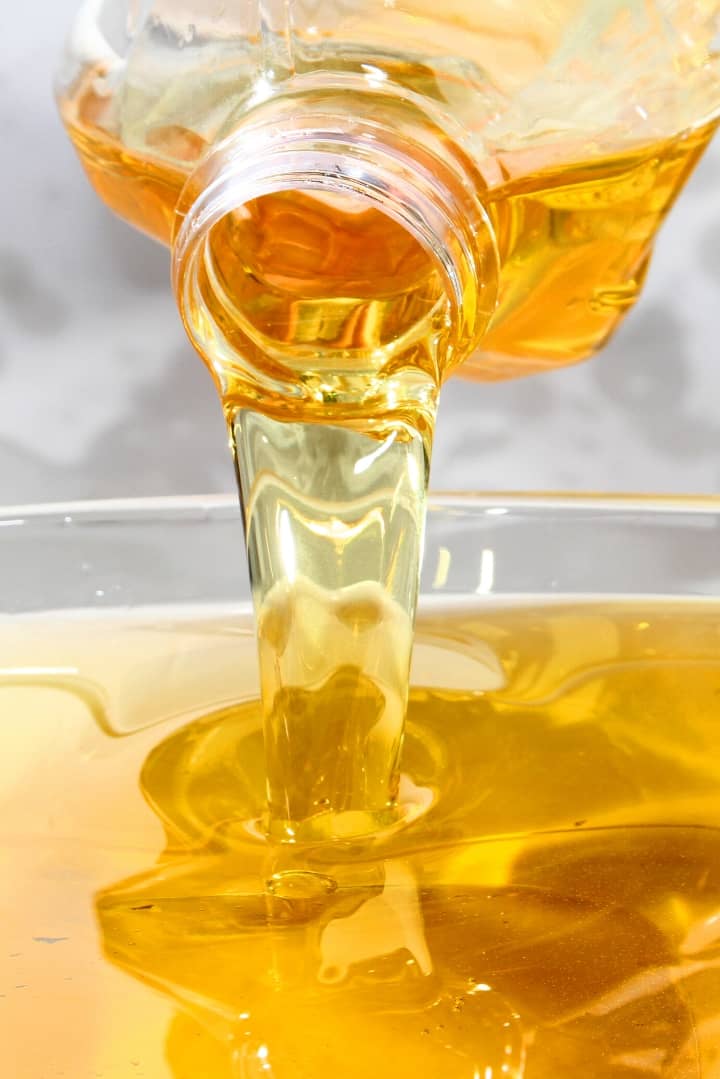
UNHEALTHY OILS
Some oils are considered not so healthy. This is because they may not have a lot of benefits or may be high in unhealthy fat. When shopping for oil, watch for oils classified as RBD. What does this mean? R = Refined B = Bleached D = Deodorized. RDB oils are often made from seeds, and the process involves crushing the seeds to extract the oil. Then the remaining product is mixed with a low-boiling solvent to take out more oil.
We’re often led to believe that foods are healthy when they are not (to learn more, read my post on the 18 WORST fake healthy foods!). It’s an easy trap to fall into despite our best efforts. Take a look at these unhealthy oils.
- Palm oil: Palm oil is often used in take out food and high in saturated fat.
- Shortening: Shortening is often hydrogenated vegetable oil, solid at room temperature, and high in saturated fat.
- Over-processed vegetable oil: Not all vegetable oil is good for you. Some of them are processed to the point that the nutrients are depleted.
- Corn oil: This a processed vegetable oil that has a high smoke point and is also used in some margarines.
- Soybean oil: This is extracted from the seeds of the soybean and is widely used as a cooking oil despite claims that it is unhealthy in regards to inflammation and more.
- Sunflower oil: This oil should not be used in home cooking, but sometimes is. It is also found in packaged foods and ice cream.
This post contains affiliate links for products I use regularly and highly recommend.

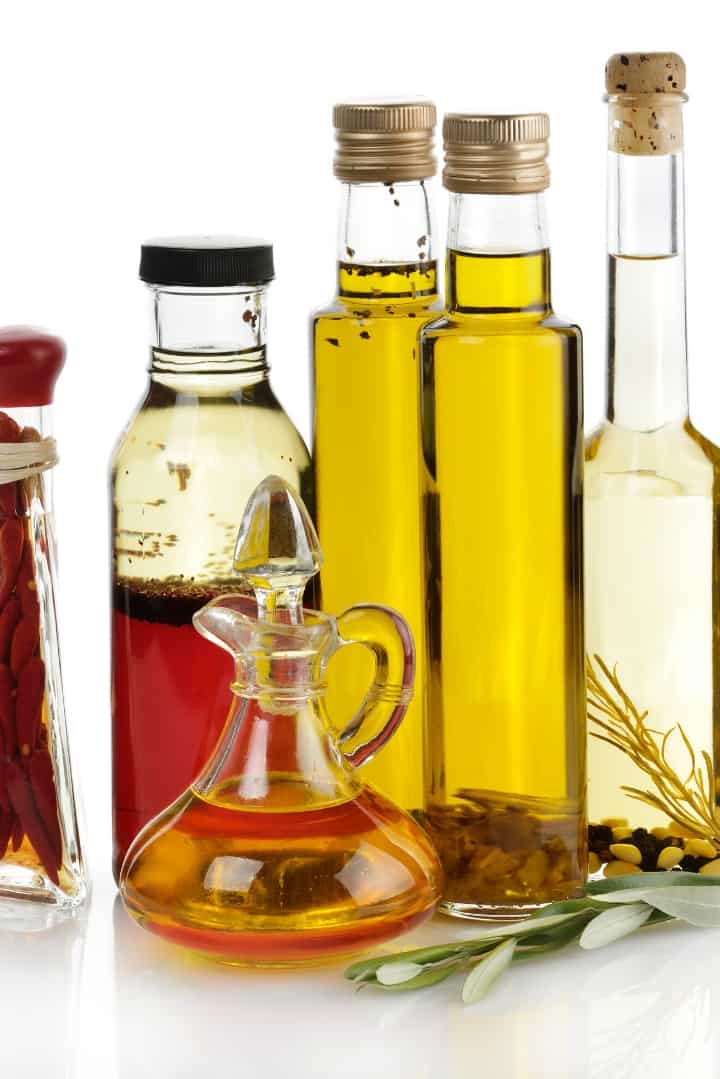

Nancy A
The blog is giving good information.